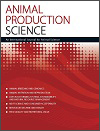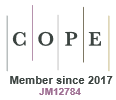AN24250Breed and sex class affect the intake, performance, and meat quality of Pantaneiro and Santa Inês lambs but do not alter carcass patterns
 , P. R. O. Oliveira, R. V. Rohod, J. C. C. Belmonte, E. R. F. da Silva
, P. R. O. Oliveira, R. V. Rohod, J. C. C. Belmonte, E. R. F. da Silva  , A. R. P. Simões, A. L. J. Ferraz, M. V. M. Oliveira, M. N. Bonin Gomes and D. M. Oliveira
, A. R. P. Simões, A. L. J. Ferraz, M. V. M. Oliveira, M. N. Bonin Gomes and D. M. Oliveira 
Pantaneiro sheep, native to the Brazilian Pantanal, are distinguished by their rusticity and adaptability to adverse environments. This study aimed to evaluate the growth performance, ingestive behavior and carcass characteristics and meat quality of Pantaneiros lambs and compare them with Santa Inês lambs. The performance of intact lambs and the observed carcass yields demonstrated the potential of Pantaneiro sheep as a breed for intensive production.




